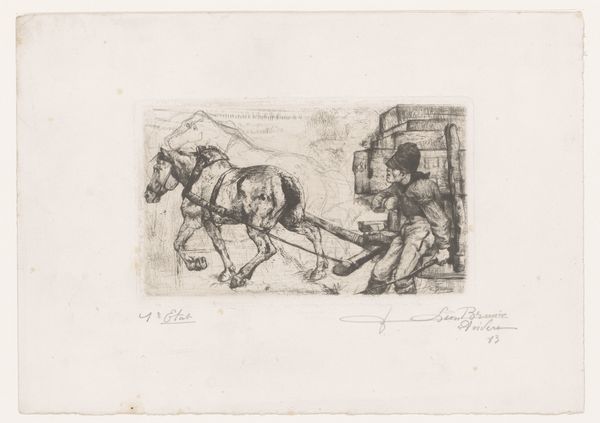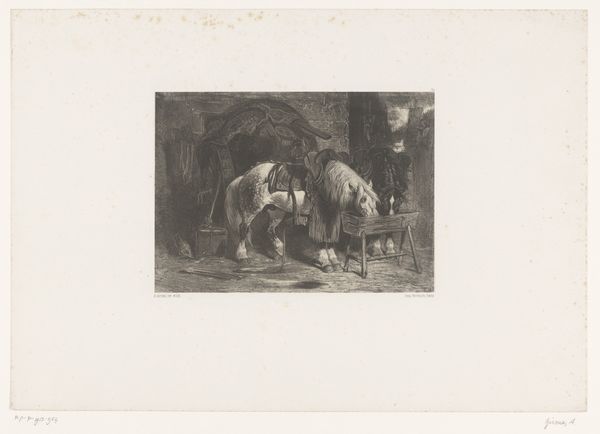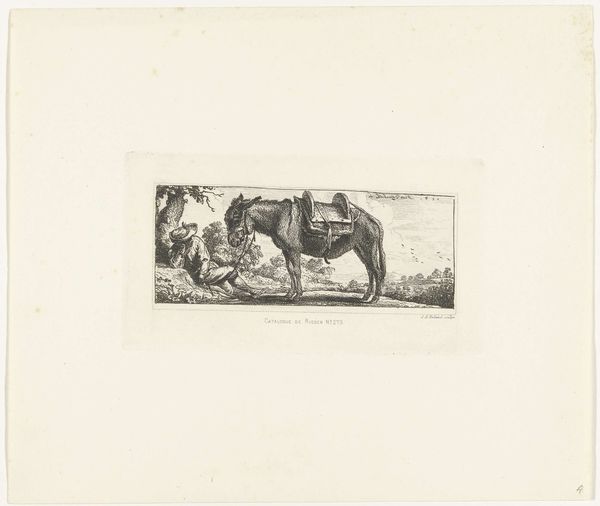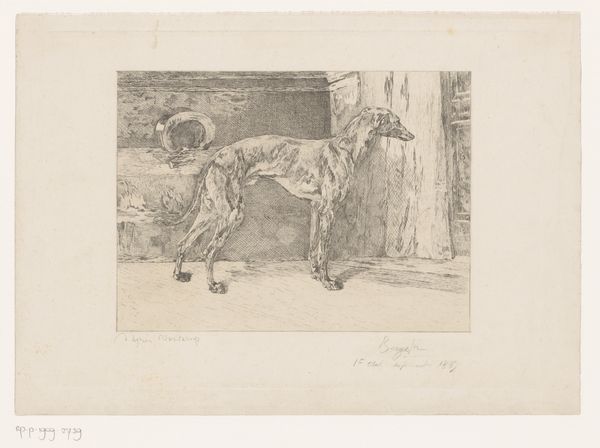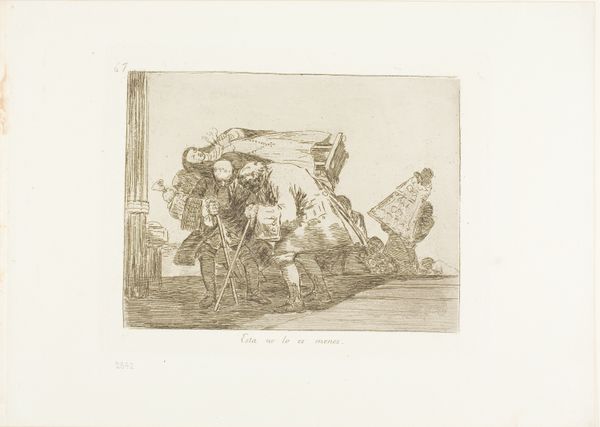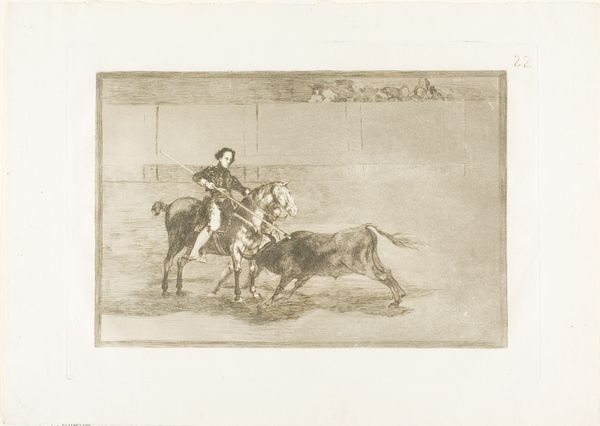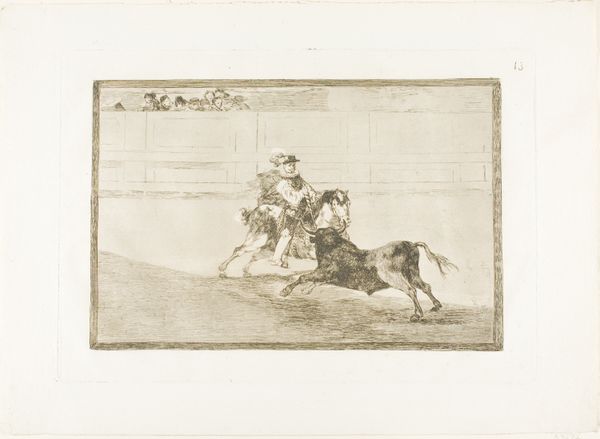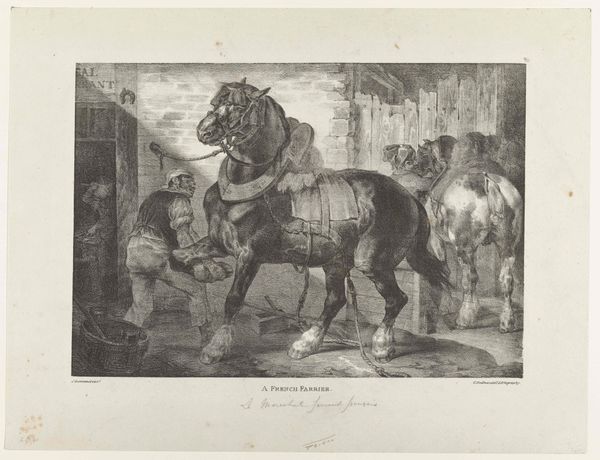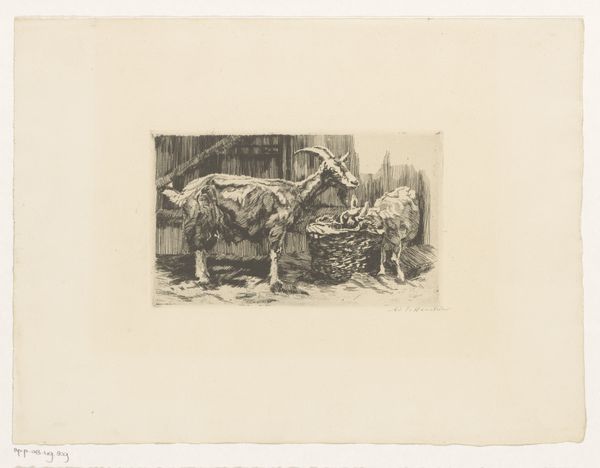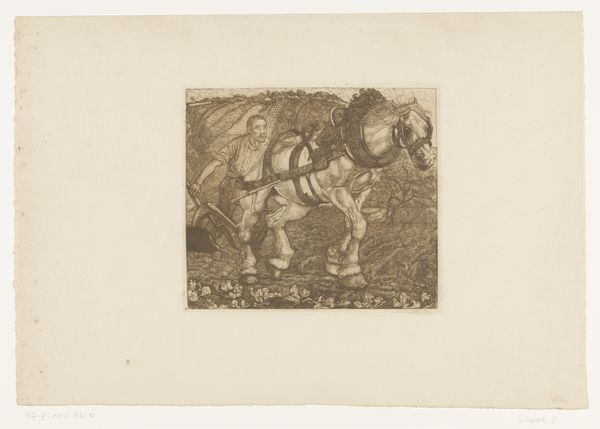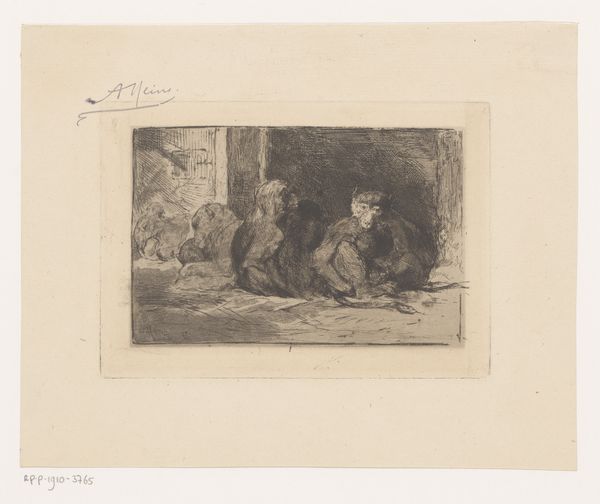
drawing, print, etching, engraving
#
portrait
#
drawing
# print
#
etching
#
landscape
#
figuration
#
line
#
genre-painting
#
history-painting
#
engraving
#
realism
Dimensions: width 164 mm, height 100 mm
Copyright: Rijks Museum: Open Domain
Curator: Let’s turn our attention to "Wagenmenner leidt een tweespan dat een zwaar beladen kar trekt," or, "Wagon Driver Leads a Team of Two Horses Pulling a Heavily Loaded Cart," created in 1883 by Léon Brunin. Editor: The scene has an air of relentless effort; it’s rough. I can almost feel the strain in the muscles of both the horses and the driver through the density of line. Curator: Absolutely, Brunin encapsulates the daily toil inherent in late 19th-century labor through a rather unvarnished lens, nodding to the social realism gaining prominence then. Note how the figures, especially the horses, dominate the landscape. Editor: It's fascinating to see etching employed this way. Often, etching lends itself to finer detail, but here, Brunin harnesses it to showcase labor, the sweat and grit, reminding me of the physicality of the medium mirroring the theme. Curator: It’s interesting you mention the physical labor because the rise of industrial printmaking allowed images like this to circulate widely, shaping public perceptions of rural work and even influencing debates about labor reform at the time. Consider also, how Brunin depicts this particular form of animal exploitation. Editor: Definitely; this makes me consider the economics of printmaking at the time and its availability to various social classes. What sort of societal impact did it have to see images like this become popularized via mass production? Curator: Such prints brought scenes of labor and working-class life into the homes of the middle classes, potentially sparking a sense of social awareness or perhaps even aesthetic appreciation for the "authentic" lives of others, of course depending on the beholder. Editor: I see Brunin made interesting material choices—etching and engraving are hardly quick processes; they required meticulous and repetitive actions, so in a way, the method mirrors the arduousness of the scene being depicted. It gives new weight to the imagery, doesn’t it? Curator: Indeed; this approach demonstrates how images, far from being neutral, actively participate in the construction of social meaning and are informed by their historical context. Editor: Reflecting on this work and our conversation, it reinforces how the art object itself can tell such compelling stories about the materials, and indeed, the society of its creation.
Comments
No comments
Be the first to comment and join the conversation on the ultimate creative platform.
